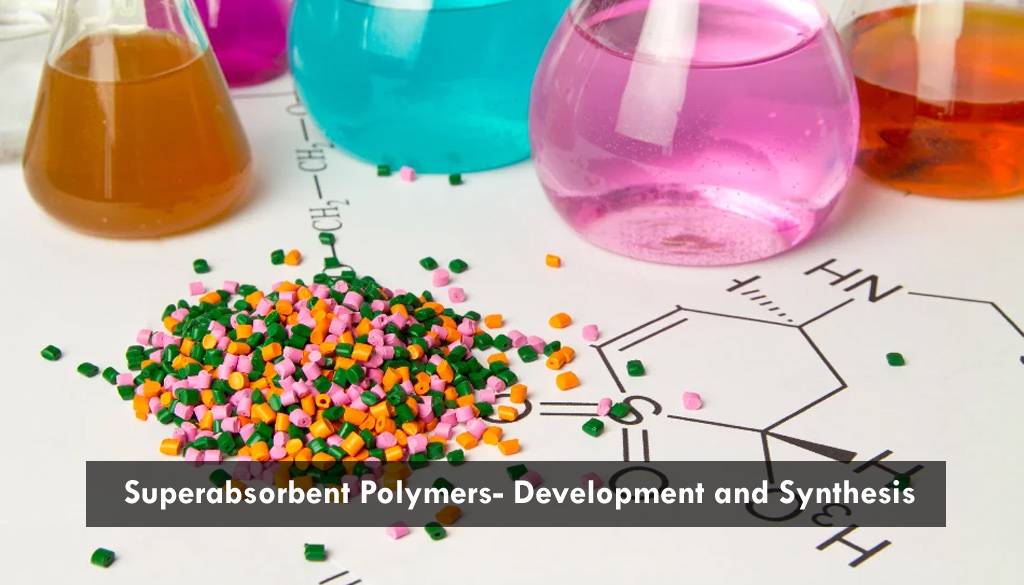
Superabsorbent Polymers- Development and Synthesis
When people refer to superabsorbent polymer (SAP), they often mean sodium polyacrylate which is commonly found in diapers and other sanitary hygiene products. A superabsorbent polymer (SAP) is a hydrogel material that can absorb and retain up to hundreds of times the dry weight of the material in water and other aqueous solutions.
Superabsorbent Polymer Types
Superabsorbent Polymers can be classified into two types, that is, sodium polyacrylate and polyacrylamide copolymer. While sodium polyacrylate is made of chains of acrylates of sodium compound, the polyacrylamide copolymer has a linear chain structure and is a super water-absorbent material. Both of these water-absorbent polymers are used in varied hygienic products like diapers, sanitary napkins, among many others.
Superabsorbent Polymer Characteristics
AA-based SAPs have excellent absorption properties but do not easily decompose, which can cause environmental problems. Many researchers have sought to improve biodegradability and lower the toxicity associated with AA-based SAPs by exploring various methods for preparing SAPs. They have explored the incorporation of biomass or natural polymers, such as starch and cellulose, either by grafting or as precursors. It studied that SAP prepared by grafting starch onto poly (acrylic acid), but in another research, SAPs synthesized by grafting cellulose onto AA as materials for drug delivery. Cellulose is a major component of plants and natural fibers and is the most abundant biopolymer. It is also, perhaps, the most useful renewable resource on the planet and will become increasingly valuable.
Superabsorbent Polymer Uses
SAPs have a three-dimensional network structure that is chemically or physically crosslinked and that does not easily release absorbed water until under a 0.3 psi pressure. These properties make SAPs widely useful materials for applications in baby diapers, incontinence pads, absorbent medical bandages, and drug delivery vehicles. Apart from this, the water-absorbent polymer can be used in artificial snow, cement, a water source for feeder insects, blocking wire and cable water, motionless waterbeds, among many other things.
Superabsorbent Polymer Process
SAPs can be synthesized by polymerization in a variety of ways. The most widely used method involves polymerizing a solution of acrylic acid (AA). These are generally processed by polymerizing acrylic acid and thereby blending it with sodium hydroxide. Apart from this, the three main methods to produce superabsorbent polymers are gel polymerization, suspension polymerization, and solution polymerization.
Written By :- Dr. Arpit Sand Department of Chemistry Manav Rachna University





